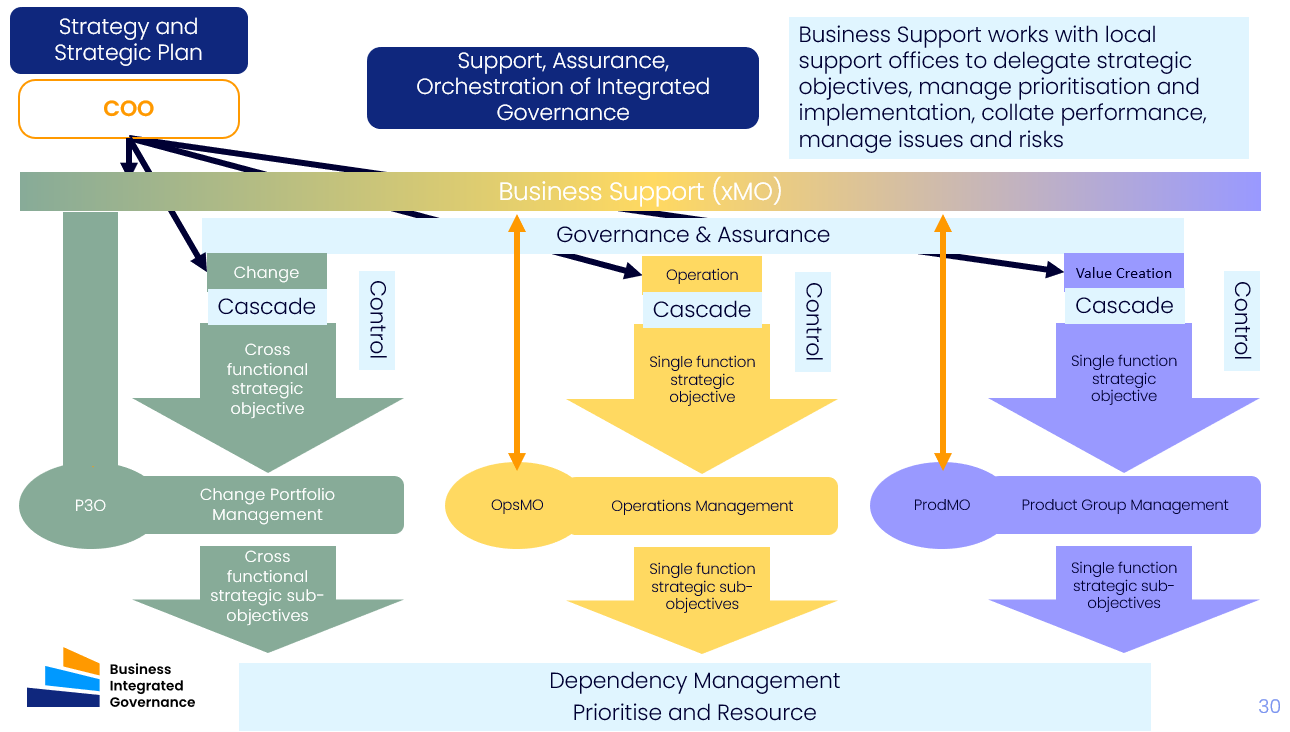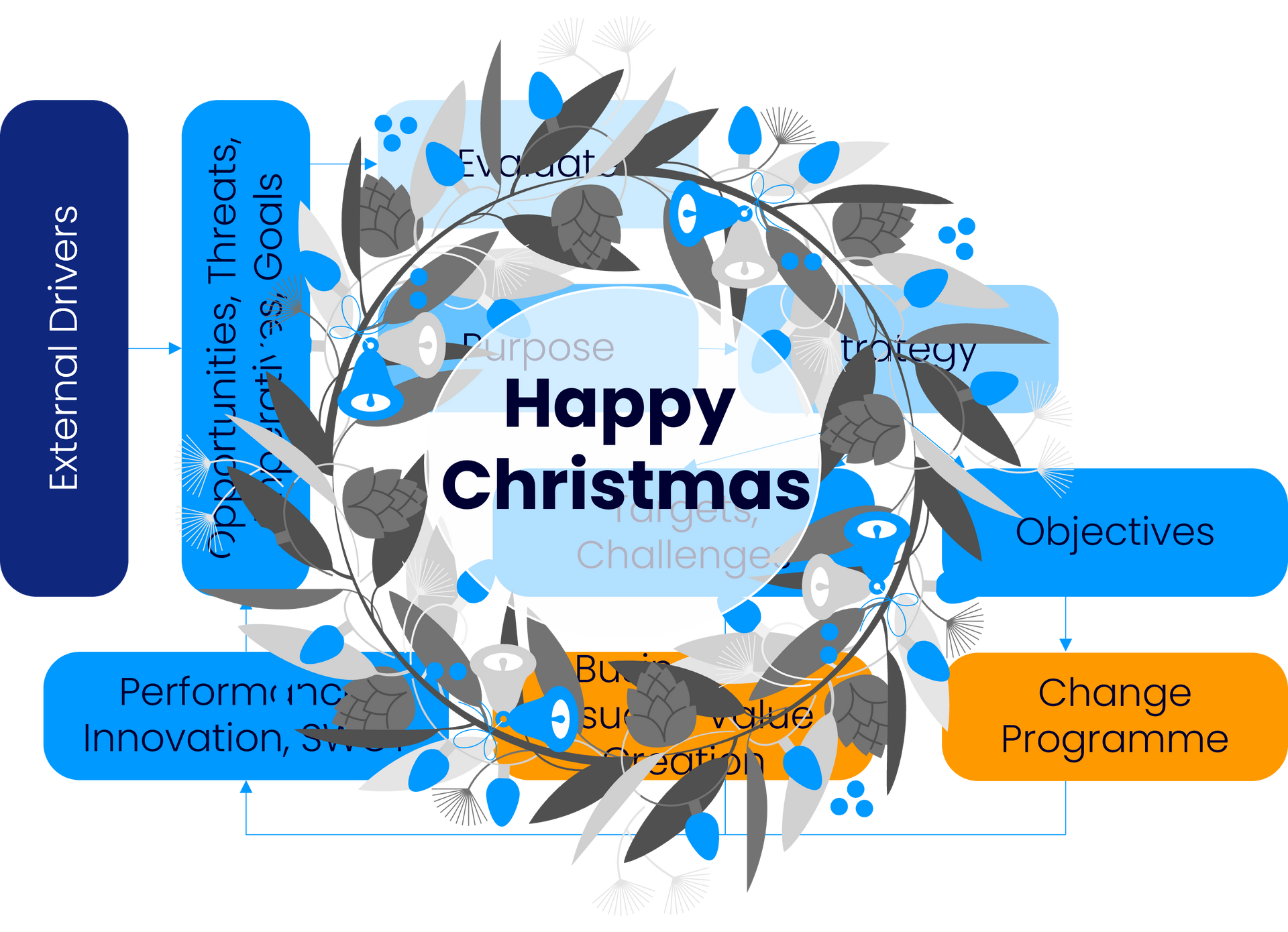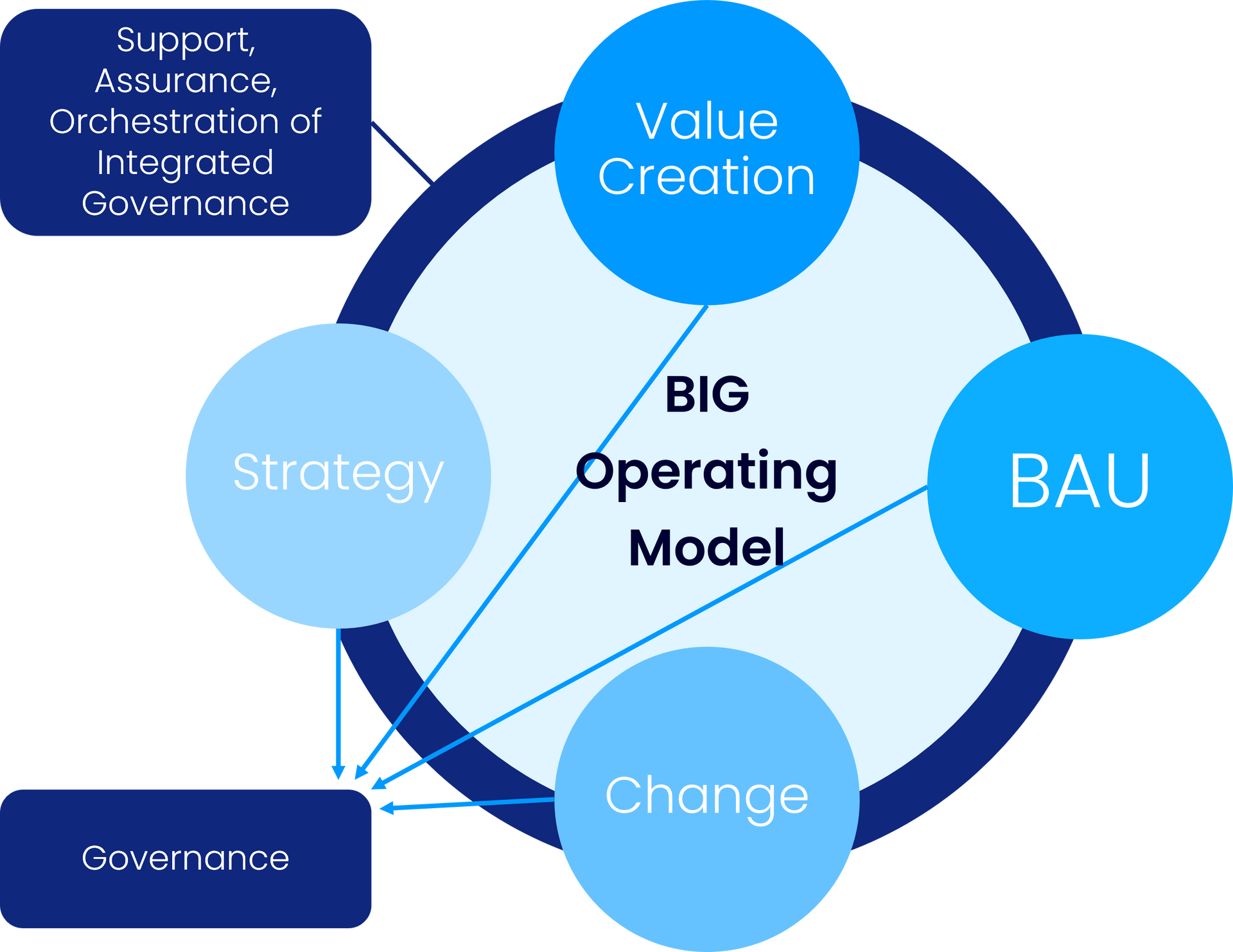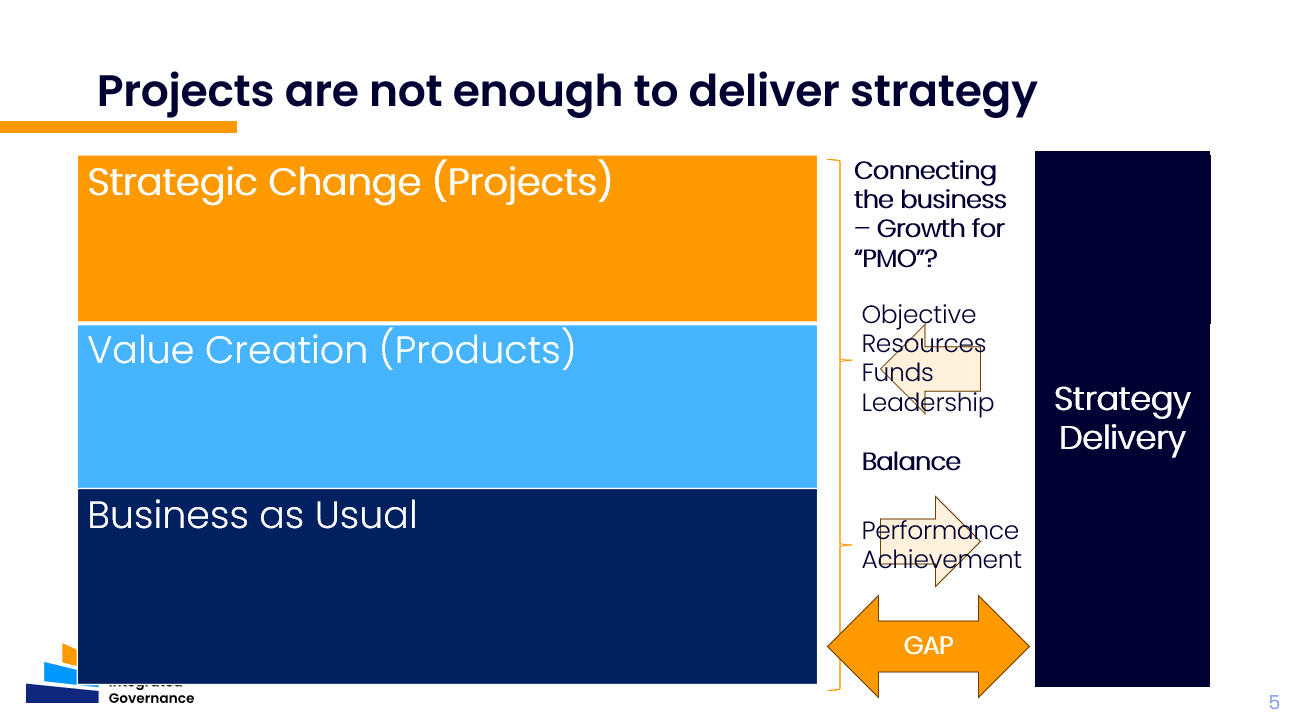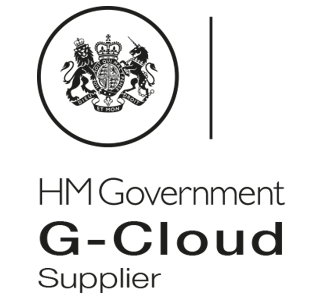Connecting Strategy to Delivery -
with Viva Goals and BIG
Introduction
Strategy is the way forward for any organisation that wants to achieve its purpose and vision. But how do you ensure that your strategy is actually delivered, and not just a nice document that gathers dust on a shelf? How do you align your people, processes, and resources to your strategic objectives and priorities? How do you measure and monitor your progress and performance, and make timely adjustments when needed?
Many organisations struggle with these questions, and face common challenges that hinder their strategy delivery. In this blog post, we will explore some of these challenges, and how you can use Viva Goals, a powerful Microsoft technology solution, to facilitate your strategy delivery. We will also discuss how Viva Goals can complement methods for managing and aligning corporate governance within an organisation, such as Business Integrated Governance (BIG), to create a comprehensive and holistic approach to strategy delivery.
Article prepared by:
David Dunning - Deepteam Director, CPS Chairman and Founder of the BIG CIC
Lester Lovelock - Head of Practice - Modern Work Management, CPS
The Challenges of Strategy Delivery
According to a Harvard Business Review article, companies on average deliver only 63% of the financial performance their strategies promise. 82% of Fortune 500 CEOs feel their organisation is effective at strategic planning, but only 14% indicated they are effective at implementing the strategy.
The
Business Integrated Governance CIC has offered this perspective of strategy delivery challenges:

The challenges of translating strategy into execution are pervasive today – MIT looked at survey data from hundreds of large enterprise companies, and while 97% of senior leaders say they understand the company's strategic priorities, only 28% of them could name their company's top three goals.
And you can imagine how this compounds as you move further away from the exec team - in Microsoft's Work Trend Index, we found that only 13% of frontline managers understand how their work contributes to the company strategy. This disconnect is costing the business every single day, and unfortunately, the current climate only makes things more difficult.
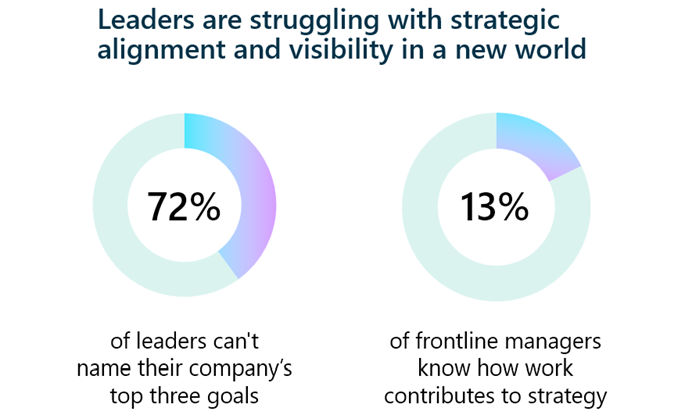
Why is there such a gap between strategy and execution?
There are many challenges inherent in aligning strategy and delivery within your organisation. This post focuses on three of the 7 themes outlined above that can represent challenges to strategy delivery: enablement, control, and integration. Let's look at each of them in more detail (Reference – the BIG CIC Services Taxonomy).
Enablement
Enablement refers to the ability of the organisation to empower its people to deliver the strategy. This involves setting clear and realistic objectives, allocating sufficient time, resources, and budgets, and prioritising the most important and impactful activities. However, many organisations face the following issues that undermine this enablement:
- The organisation has too many competing objectives and related activities, which create confusion, overload, and conflict.
- Leadership time, resources, and budgets are overcommitted. Prioritisation is ad hoc and academic, rather than based on data and evidence.
- Strategic priorities are regularly overridden for short term expedience, which erodes the trust and commitment of the stakeholders and the staff.
These issues result in a lack of focus, alignment, and engagement, which reduce the effectiveness and efficiency of strategy delivery.
Control
Control refers to the ability of the organisation to monitor and manage its strategy delivery. This involves defining clear and measurable plans and indicators, collecting and analysing reliable data, tracking progress and performance, and making informed and timely decisions. However, many organisations face the following issues that undermine their control:
- Objectives are not supported with clearly defined plans and measures, which make it difficult to assess the feasibility, scope, and impact of the strategy.
- Performance is difficult to measure with reliable data. Progress is reported on tasks, not objectives, which can obscure the actual value and outcome of the strategy by focusing primarily on the delivery.
- Alignment drifts between objectives and activity, which creates gaps, overlaps, and inconsistencies in the strategy delivery.
- Meeting agendas are not well controlled, which leads to unproductive and unfocused discussions and actions.
- Assurance is not built into governance operation, which exposes the organisation to risks and uncertainties.
- These issues result in a lack of visibility, accountability, and agility, which reduce the quality and speed of strategy delivery.
Integration
Integration refers to the ability of the organisation to coordinate and connect its strategy delivery across different domains and levels. This involves creating a big picture of how the objectives cascade, connect, and combine, aligning the governance approaches and practices for overall coherence, and enabling cross-functional support and collaboration. However, many organisations face the following issues that undermine their integration:
- Low confidence that objectives are actioned within business planning, which creates a disconnect between strategy and operations.
- No big picture of how objectives cascade, connect, and combine, which prevents the organisation from seeing the interdependencies and synergies of the strategy.
- Parochial approaches to governance not aligned for overall governance, which creates silos and conflicts among different domains and levels.
- Lack of performance baseline for governance operation, which makes it hard to benchmark and improve the governance effectiveness and efficiency.
- No cross-functional support to enable integrated governance, which limits the sharing of information, resources, and best practices.
- Information and data facilities not adequate to manage or provide assurance, which hampers the quality and availability of data for decision making.
- Disconnected information sources not designed to aggregate upwards, which impedes the consolidation and communication of data for reporting.
- Use of processes and tools not adequate to operate governance, which reduces the usability and functionality of the governance systems.
These issues result in a lack of coherence, consistency, and collaboration, which reduce the scalability and sustainability of strategy delivery.
How Viva Goals Can Help
Viva Goals is a technology solution from Microsoft that helps organisations connect their strategy to their delivery. It is a cloud-based platform that enables organisations to define, align, and track their strategic objectives and priorities, and to empower their people to achieve them.
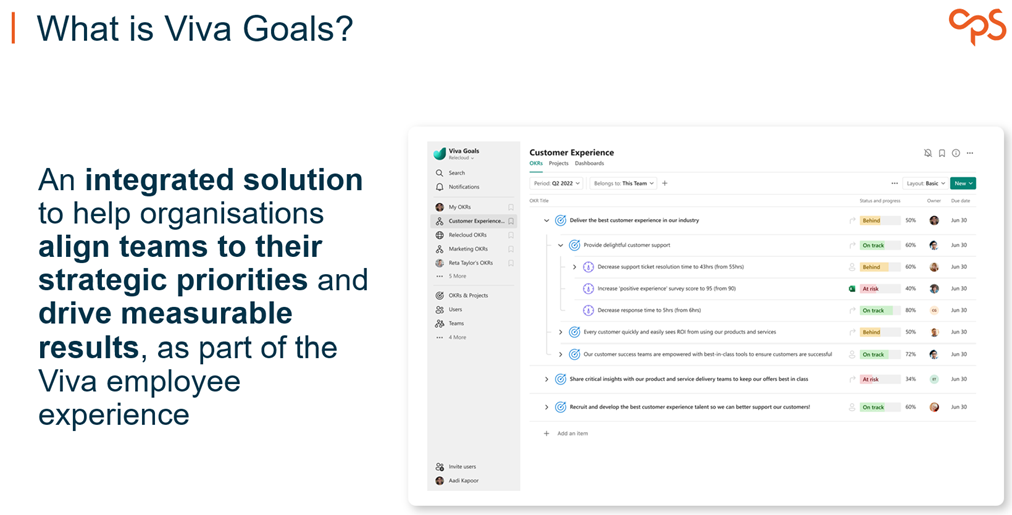
Viva Goals can help organisations address some of the challenges of strategy delivery, such as:

All in all – these outcomes and benefits lead to greater value with more effectiveness and efficiency from strategy delivery.
How BIG Can Help
BIG provides a comprehensive approach to defining and operating governance through all governance bodies within an organisation – from (for example) corporate governance to department leadership teams, product groups and project boards. It involves integrating governance principles, practices, and structures throughout business operations and decision-making processes. BIG can help organisations address some of the challenges of strategy delivery, such as:
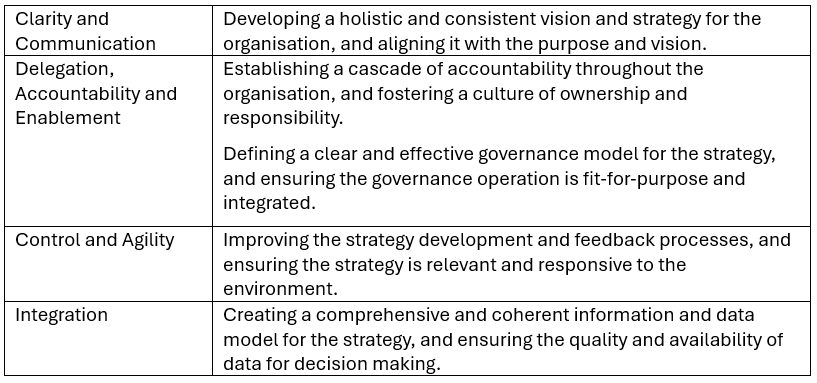
The BIG Body of Knowledge also contains guidance on:
- How to get improving strategy delivery though Business Integrated governance onto the executive agenda
- Definitions for the components of BIG Operating Model (i.e. what do you need to build and operate to enable BIG to work)
- Implementing a transformation programme to build and sustain the BIG capability, and ensuring the change is managed and adopted.
How Viva Goals and BIG work together
Viva Goals is a backbone for strategy delivery - not a silver bullet that can solve all the challenges of strategy delivery. It is a powerful technology solution that can enable and enhance the management of objectives and key results within strategy delivery. It provides the core of information which is part of an operating model for strategy development and delivery – providing the basis for decision making and governance through the organisation.
Viva Goals is central to an organisation operating the Business Integrated Governance (BIG) necessary for effective strategy development and delivery.
Viva Goals and BIG can work together to create a comprehensive and holistic approach to strategy delivery, by leveraging the strengths of both technology and governance. Viva Goals can provide the platform and tools to define, align, and track the strategic objectives and priorities, and to empower the people to achieve them. BIG can provide the framework and methods to develop and sustain the vision and strategy, and to integrate and align the governance operation. Together, they can help organisations connect their strategy to their delivery, and achieve their purpose and vision.
Together, Viva Goals and BIG can help organisations enhance the performance and achieve greater value from strategy delivery:
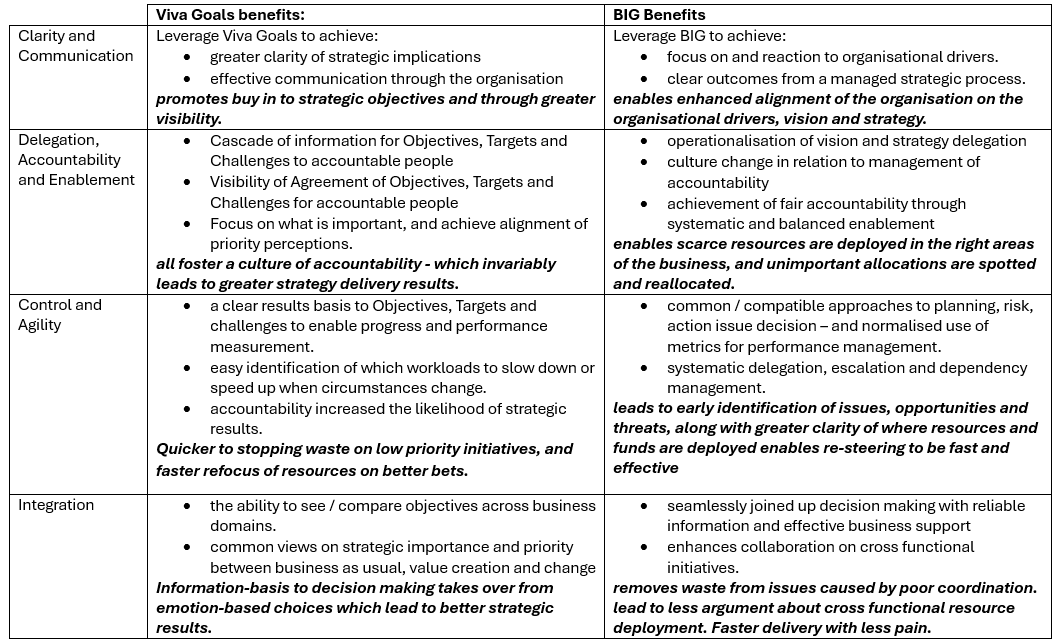
Conclusion
Strategy delivery is a complex and challenging undertaking, but it is also a critical and rewarding one. By understanding the common challenges of strategy delivery, and by using Viva Goals and BIG as complementary strategies, organisations can improve their strategy delivery capability, and achieve greater outcomes and value.
If you are interested in learning more about Viva Goals and BIG, and how they can help you connect your strategy to your delivery, please contact us and find out how to start the journey to improve strategy delivery:
See where Viva Goals fits in the BIG Framework:
Enablers
- Clarity of Purpose(s)
- Strategic Process
- Integrated Governance Framework
- Information and Data Capability
- Business Support - to operate the Strategic Process and Integrated Governance
Technology
- Corporate RAID
- Document Library
- OKR Platform - Viva Goals
- Prioritisation tools
- Milestone Planning
- Resource Planning
- Finance Planning
RAID - Risk, Action, Issue and Decision
OKR - Objective and Key Results
Culture Change
- Current State Assessment - of current capability
- Periodic Review of Purpose, Business Drivers
- Enabled people
- Working Strategy Operating Model
- Adopted Strategy Information Model
- Operation of Integrated Governance
- Fair Accountability

